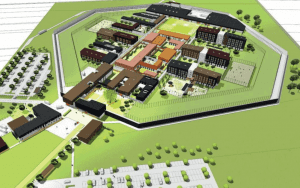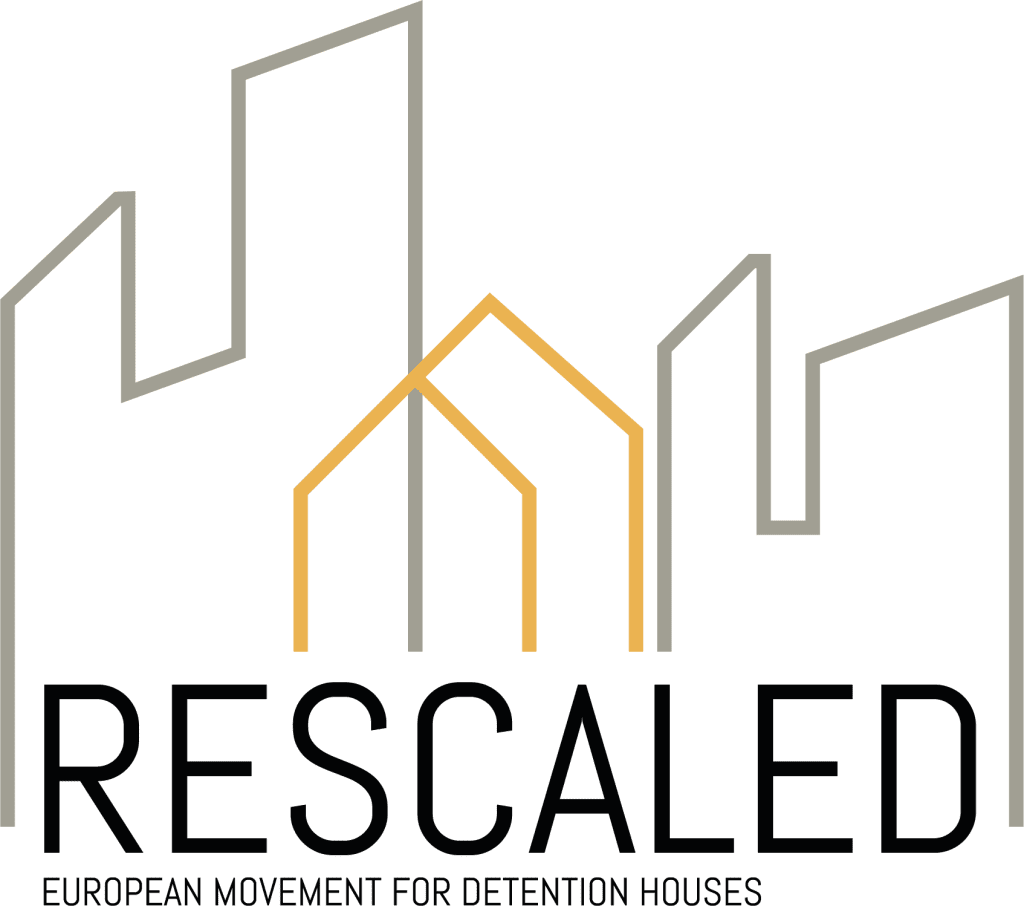The Ministry of Justice has recently published the statistical series of persons in custody[2] in France between 1980 and 2020. One of the major findings: more and more people are being incarcerated. Indeed, the number of people in custody has increased from 36,900 in 1980 to 82,300 in 2020, including 70,700 people in prison. A record number was reached in April 2019: 71,828 people in prison. It must be said that France is regularly singled out for its inhuman detention conditions. In January 2020, France was condemned by the European Court of Human Rights in a landmark ruling recommending to take measures to end prison overcrowding.
Over the centuries, France has developed a prison complex composed mainly of large institutions. Of the 186 prisons in existence today, 130 have a capacity of more than 100 persons. The small scale prisons built in the 19th century are slowly but surely being replaced by large institutions. These “city-like prisons” now dominate the prison landscape, while other smaller institutions, which we will discuss later, are struggling to develop.
A LACK OF COHERENCE IN POLICY DECISIONS
As described by Manu Pintelon in his latest blog, the Belgian government is pursuing two seemingly incompatible objectives: the expansion of the prison complex with the construction of new facilities with several hundred places, while promoting small detention houses for certain target groups.
In the same way, in France, political decisions in terms of imprisonment sometimes seem inconsistent to us.
On the one hand, the new Minister of Justice, Eric Dupond-Moretti, wants to develop alternatives to incarceration, in particular with the use of house arrest under electronic surveillance for sentences of less than 6 months, as well as alternatives to prison from the moment of the hearing for sentences of less than one year. In other words, the Minister of Justice reminds once again that prison, as mentioned in the law[3], should not be the reference sentence in criminal matters, and that other measures should be developed in order to avoid detention.
On the other hand, the government plans in its Programming and Reform Law for Justice 2018-2022[4] to build 7,000 new places by 2022 and then 8,000 additional places, for a total of 15,000 places in addition to the current 60,626 places. This law continues the ongoing attempts to solve the prison overcrowding and more specifically the Chalandon plan, which promised the construction of 13,000 additional places as early as 1988. It has become clear, however that the curve of the increase in prison places only follows the curve of the increase in incarceration without ever catching up. The words spoken in 1819 by Duke Decaze are still valid: “as construction expands, the number of prisoners increases”. As a result, living conditions in detention are marked by difficulties in maintaining ties with relatives, lack of privacy, conflictual relations between detainees and with prison staff, limited access to work posts. New prison places will not necessarily contribute to improve these conditions, especially if they are built in the same way as the previous ones, far from the cities, in the form of large complexes of dehumanizing size. This is all the more problematic since investing in new prison places seems to be prioritized over the maintenance of existing facilities, and over the development of non-custodial sentencing options. This is particularly unfortunate because these are more humane, less costly and much more effective solutions to prevent recidivism and remedy prison overcrowding.
 Lutterbach penitentiary center (in the Grand Est region, near Mulhouse),
Lutterbach penitentiary center (in the Grand Est region, near Mulhouse),
construction started in 2018, to be completed in 2021.
TURNING THE SENTENCE INTO AMEANINGFUL TIME
In order to promote the rehabilitation and desistance of incarcerated people, the Prison Administration has launched several experiments. Of the 7,000 new prison places pledged between now and 2022, 2,000 are part of the SAS program (“Structures d’Accompagnement vers la Sortie”). These facilities receive between 60 and 180 people with a sentence shorter than one year, or at the end of their sentence. The promise: an enhanced program of activities and greater autonomy. Another project that will be launched in 2021 is InSERRE (Innovating through Experimental Structures for Empowerment and Reintegration through Employment): prisons with a capacity of 180 people, all enrolled in a vocational training program or work. These experiments are interesting, but will they be enough to challenge the entire prison system?
In addition, the Prison Administration encourages the development of “outdoor placement”. This allows a person who is sentenced to prison to serve all or part of that sentence outside of a prison, while being supervised by an NGO that collaborates with the Prison Administration. Today, around 600 people are being taken care of by organizations during their transition from prison to freedom. One example is the Emmaüs farms, presented in a blog by Inês Viterbo. This measure when it is carried out in NGOs with small numbers of persons allows for individualized support. We know how an appropriate tailored approach helps reintegration and facilitates desistance. We have everything to gain from the development of this type of initiative.
In sum, we can see a contradiction in these policies: alternative sentences are encouraged, while at the same time promoting the extension of the prison facilities. Efforts to reduce overcrowding should focus on developing alternatives measures to detention. When detention is necessary, it should be carried out in a context that respects the dignity of the individual. Let us make the sentence useful both for the detained person and for society. Let us put reintegration back at the heart of the sentence through individualized counseling, in small-scale centers such as detention houses where everyone’s responsibility is engaged.
[1] In reference to the song ” Another brick in the wall “, from the band Pink Floyd.
[2] This legal act (“être sous écrou”) covers several realities. A person in custody may occupy a place in prison or be accommodated outside the prison (at home, in a shelter or in other accommodation) when his or her sentence has been adjusted.
[3] Law n° 2009-1436 of November 24, 2009.
[4] 2018-2022 Programming and Reform Law for Justice, which entered into force on March 24, 2020.




